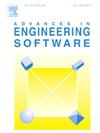The crashworthiness prediction and deformation constraint optimization of shrink energy-absorbing structures based on deep learning architecture
Abstract
The deformation behavior of shrink energy-absorbing structures is influenced by numerous factors, and improper matching of parameters in the design process can easily lead to buckling instability, or even failure to absorb energy. Existing research methods can only obtain descriptive laws on how structural parameters affect deformation modes, but cannot determine the parameter domain for stable shrink mode, leading to poor prediction and optimization effects. For this purpose, a crashworthiness prediction framework based on deformation image generation and classification network (DIGCNet) was proposed to accurately predict the mean crushing force (MCF) and specific energy absorption (SEA) in the shrink mode domain. An image generator and a classification network were used to establish mapping relationships from structural parameters to deformation modes. The effects of the DIGCNet hyperparameters on prediction accuracy were analyzed. Subsequently, the shrink energy-absorbing structure was optimized under deformation constraint, and compared to the unconstrainted solution. The results show that the DIGCNet can eliminate abnormal deformations and achieve the structural optimization under the parameter domain of the shrink mode.

 求助内容:
求助内容: 应助结果提醒方式:
应助结果提醒方式:


